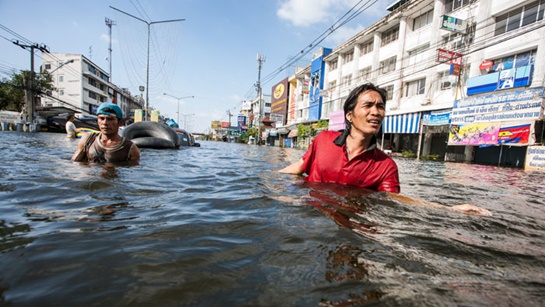 11-09-2019
11-09-2019
Only 9% of economic losses from catastrophes in Asia are insured:AIR

 Insurance Alertss
Insurance AlertssOnly 9% of economic losses from catastrophes in Asia are insured:AIR

Insured losses for catastrophes account for only about 9% of economic losses in Asia reflecting the very low insurance penetration in the region, revealed catastrophe modeling firm AIR Worldwide (AIR) in its 2019 'Global Modeled Catastrophe Losses' report. On the other hand, 24% of economic losses globally are insured.
The report details major loss metrics from AIR’s global industry exceedance probability curve and discusses global economic losses from catastrophes which can vastly exceed insured losses depending on the region and peril.
The loss metrics are derived from the current suite of global property and crop models from AIR, including new models and updates released during 2019 as well as databases of property values for more than 110 countries. However, the report excludes losses from AIR’s pandemic, cyber and casualty models. The insurable loss metrics include all exposures eligible for insurance coverage, regardless of whether they are actually insured. They represent the total damage minus deductibles and limits.
Protection gap – a global issue
It disclosed that while the global modeled insured average annual loss (AAL) from catastrophes worldwide is about $92bn and the economic AAL around $394bn, the insured AAL and economic figures in Asia are $12bn and $133bn respectively.
Global economic losses include insured and insurable losses as well as losses from non-insurable sources which may include infrastructure and lost economic productivity. Comparing insured losses with reported economic loss estimates for natural disasters since 1990, AIR has determined that global insured losses make up about a quarter of global economic losses on average.
Commenting on this issue, AIR Worldwide president Bill Churney said, “While the global insurance industry continues to shine a light on the protection gap, our analysis indicate there is still work to be done to address the disparity between economic and insured losses.” He said, “History has shown that higher insurance take-up allows society to recover more quickly from extreme events and AIR will continue to work with the insurance and reinsurance industry, businesses, governments and non-governmental organisations to reduce the protection gap.”
Meanwhile, AIR Worldwide executive vice president Rob Newbold said, “With four months left in 2019, there’s still the possibility of experiencing significant insured losses.”
Source: Asia Insurance Review